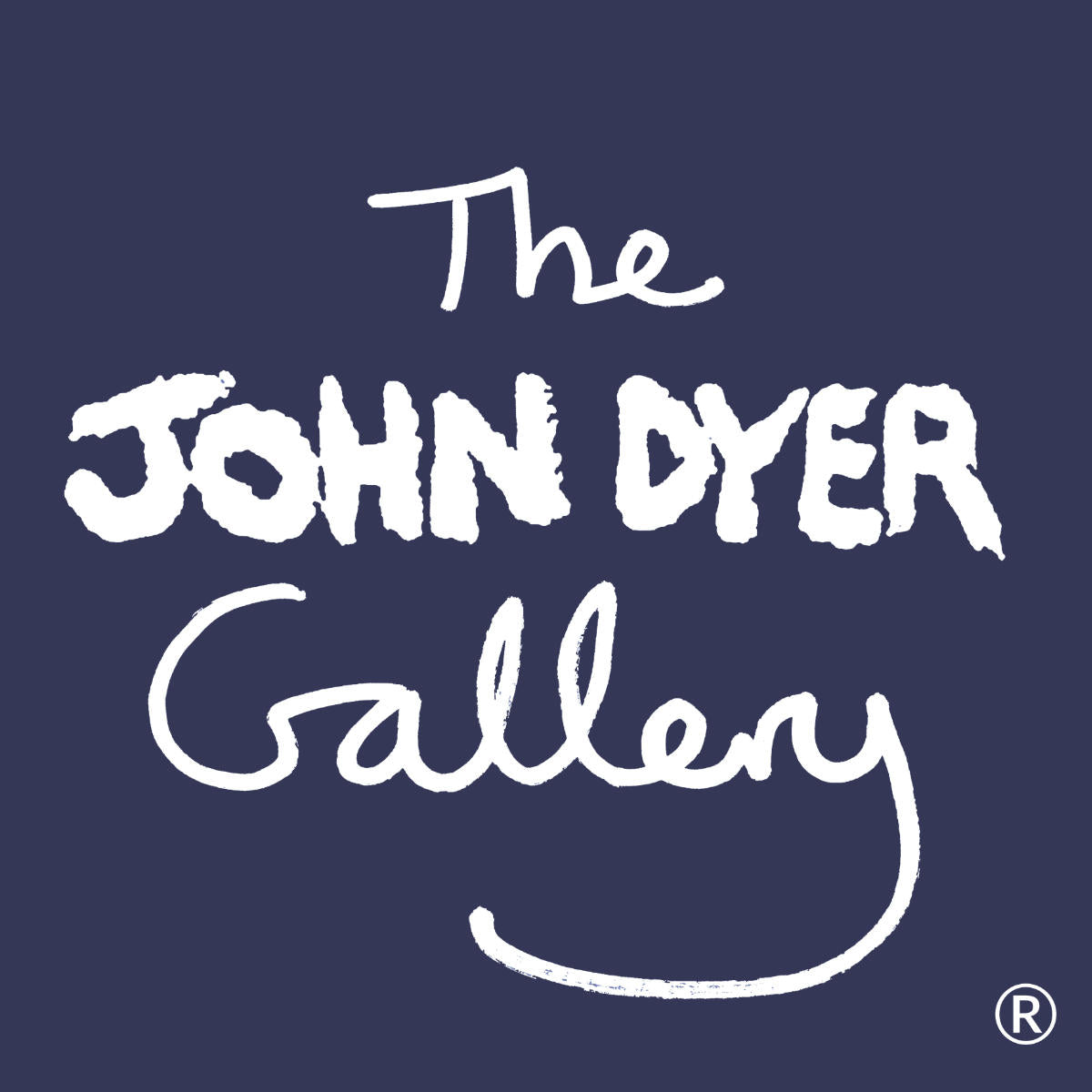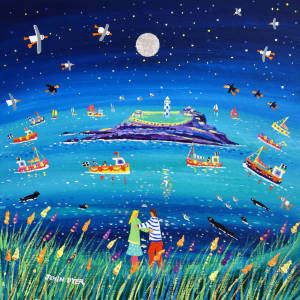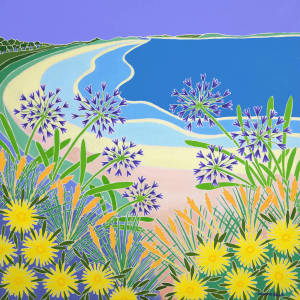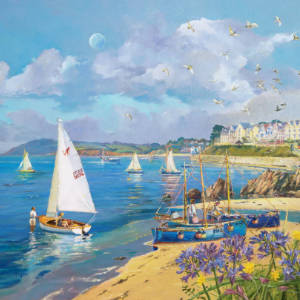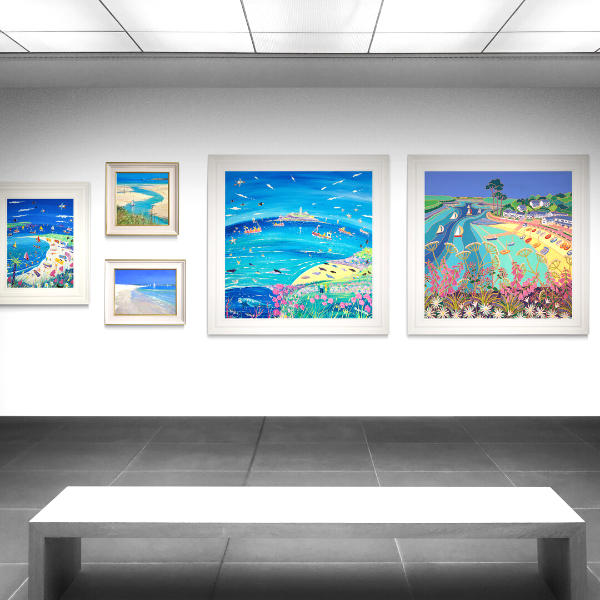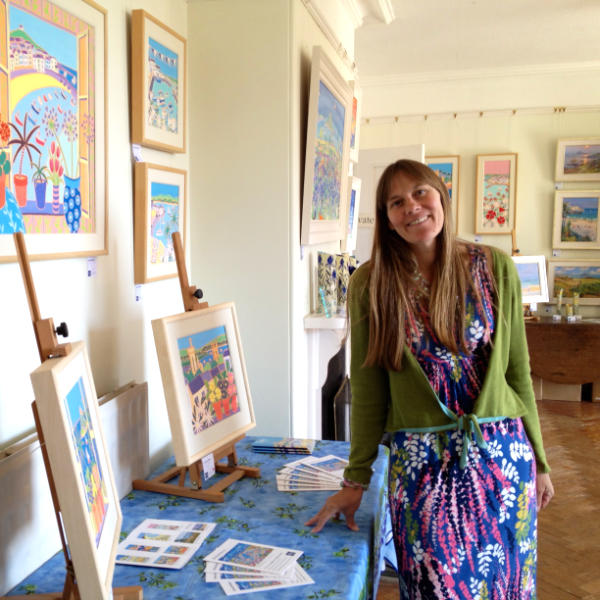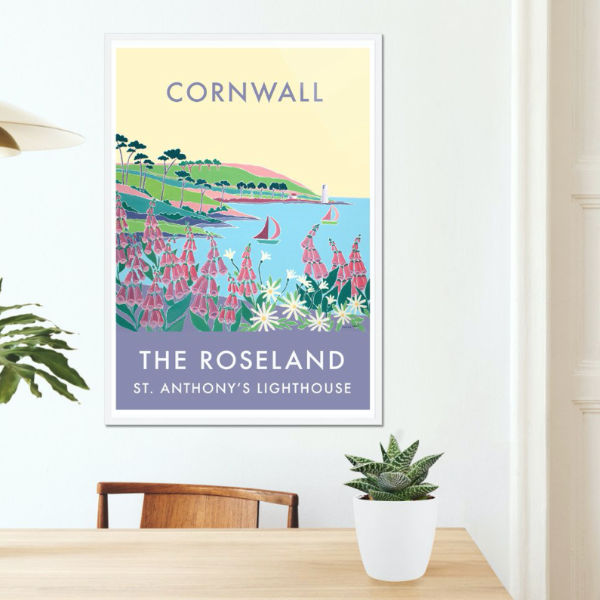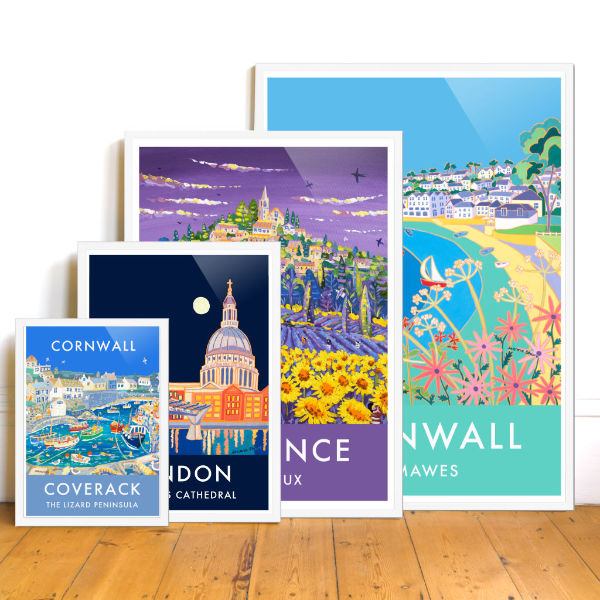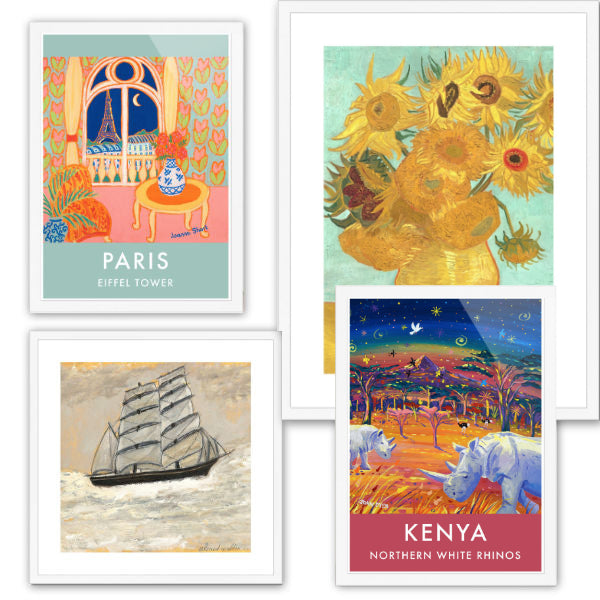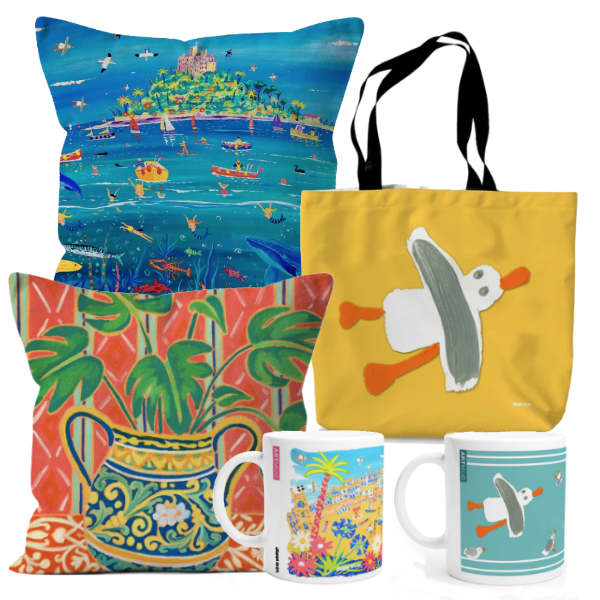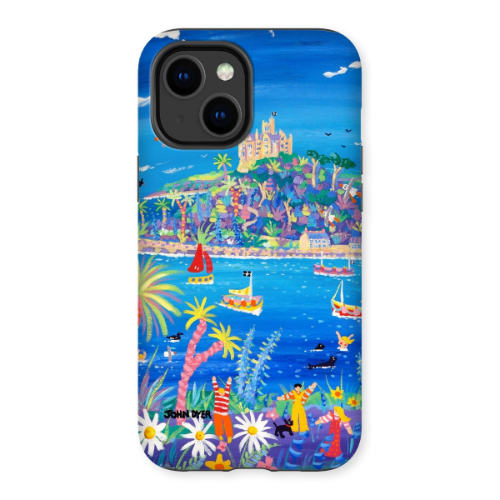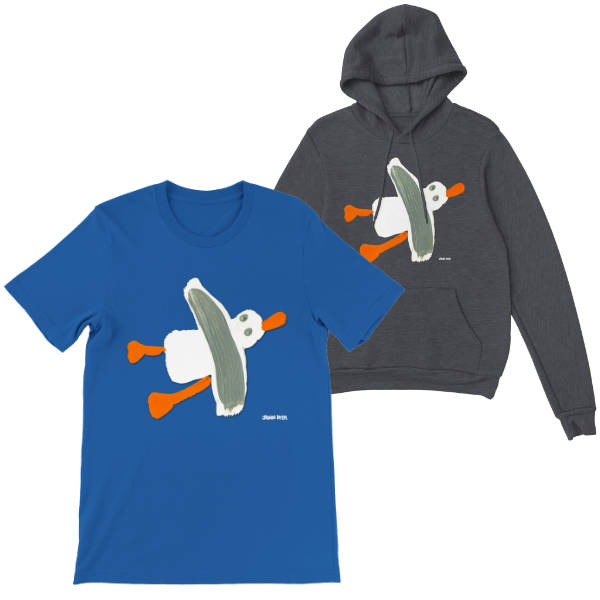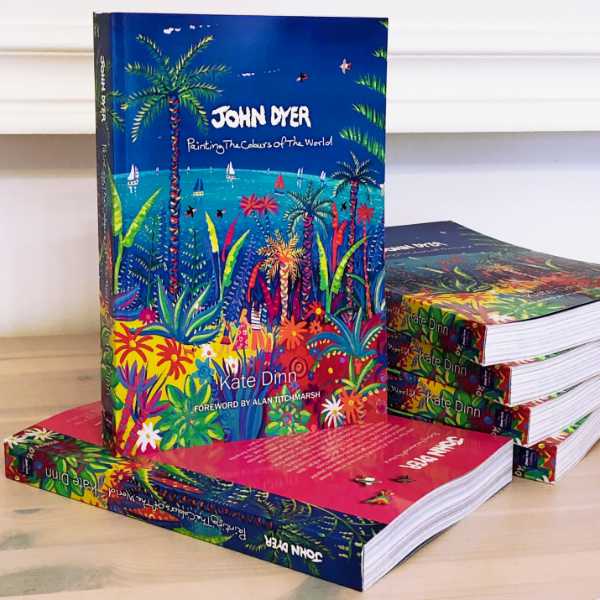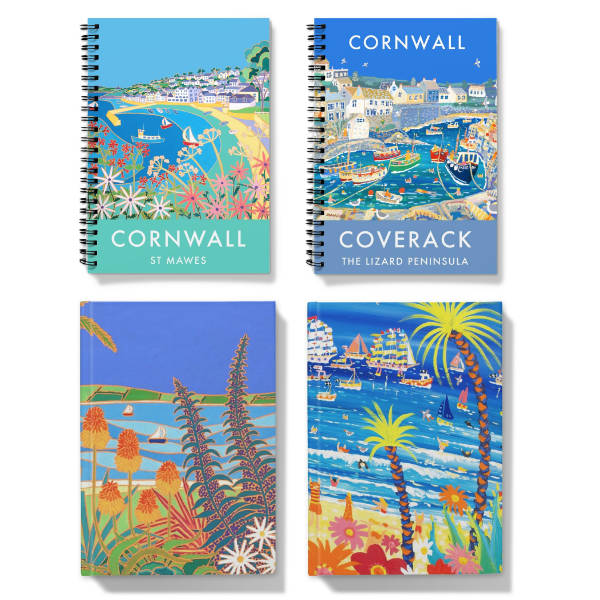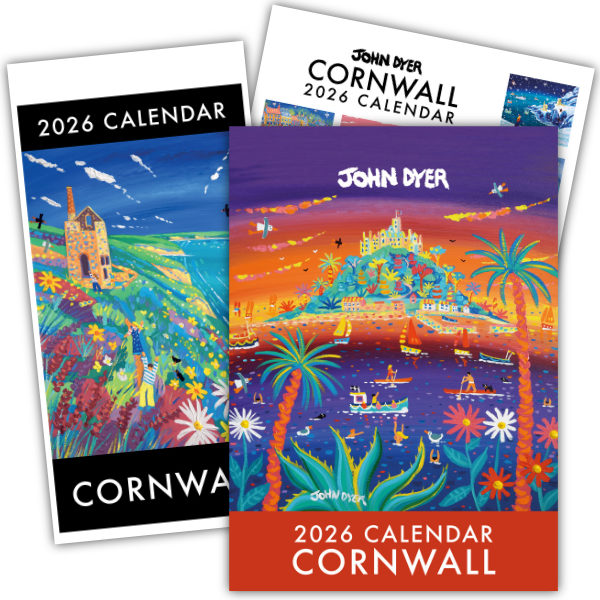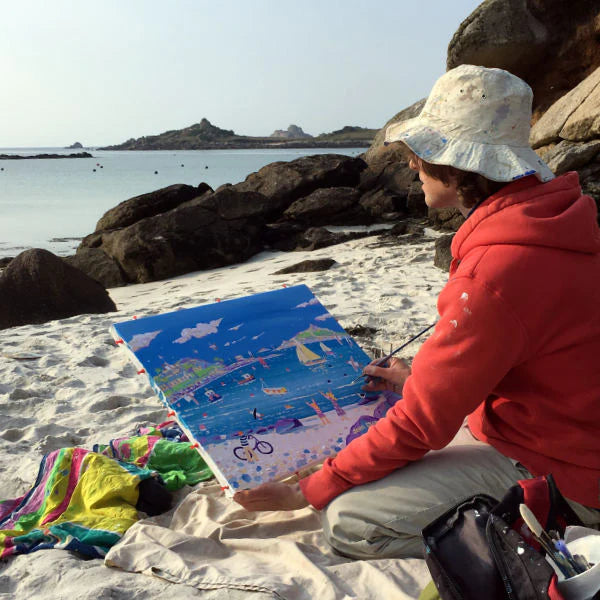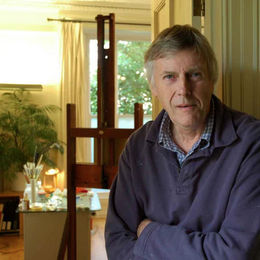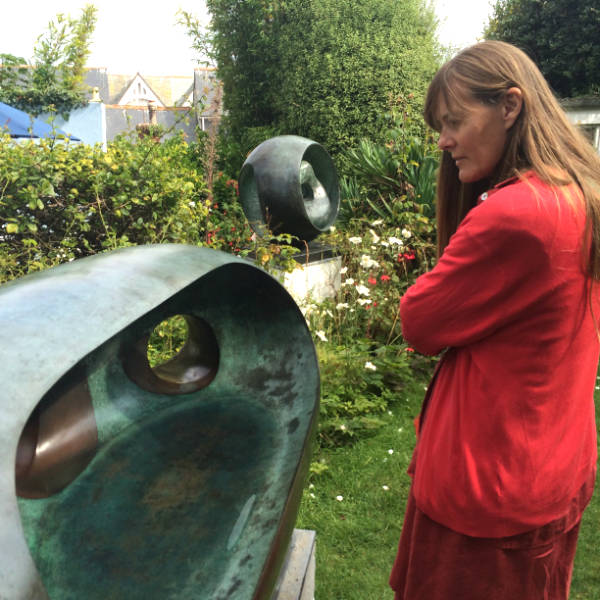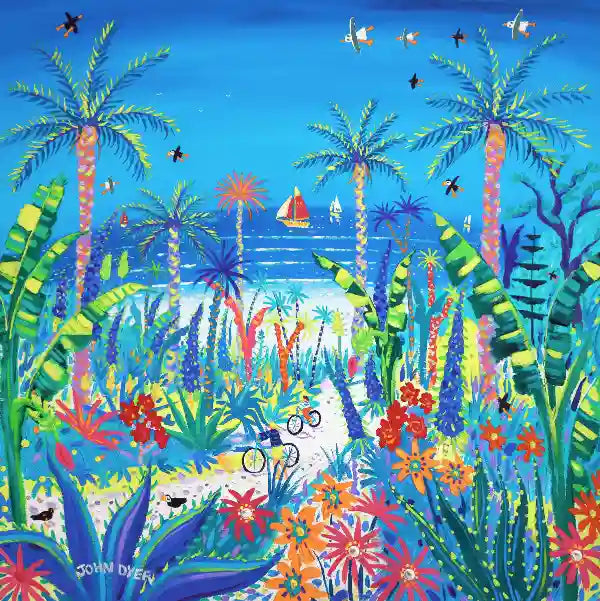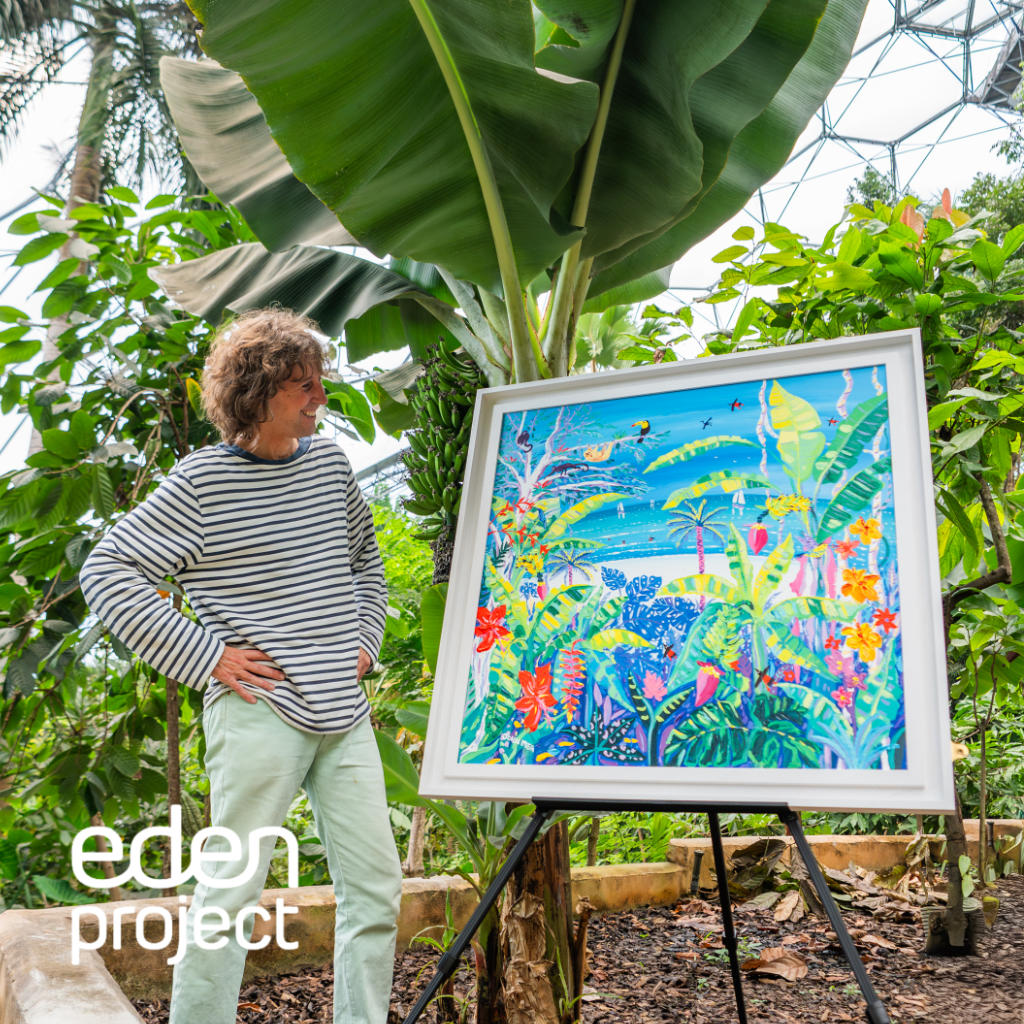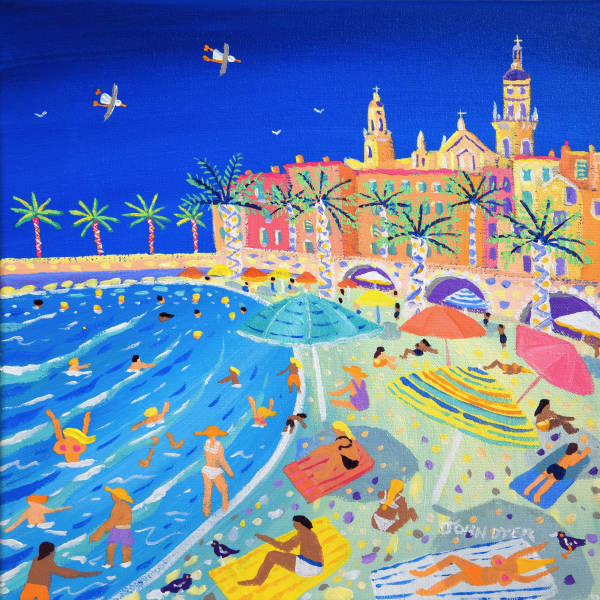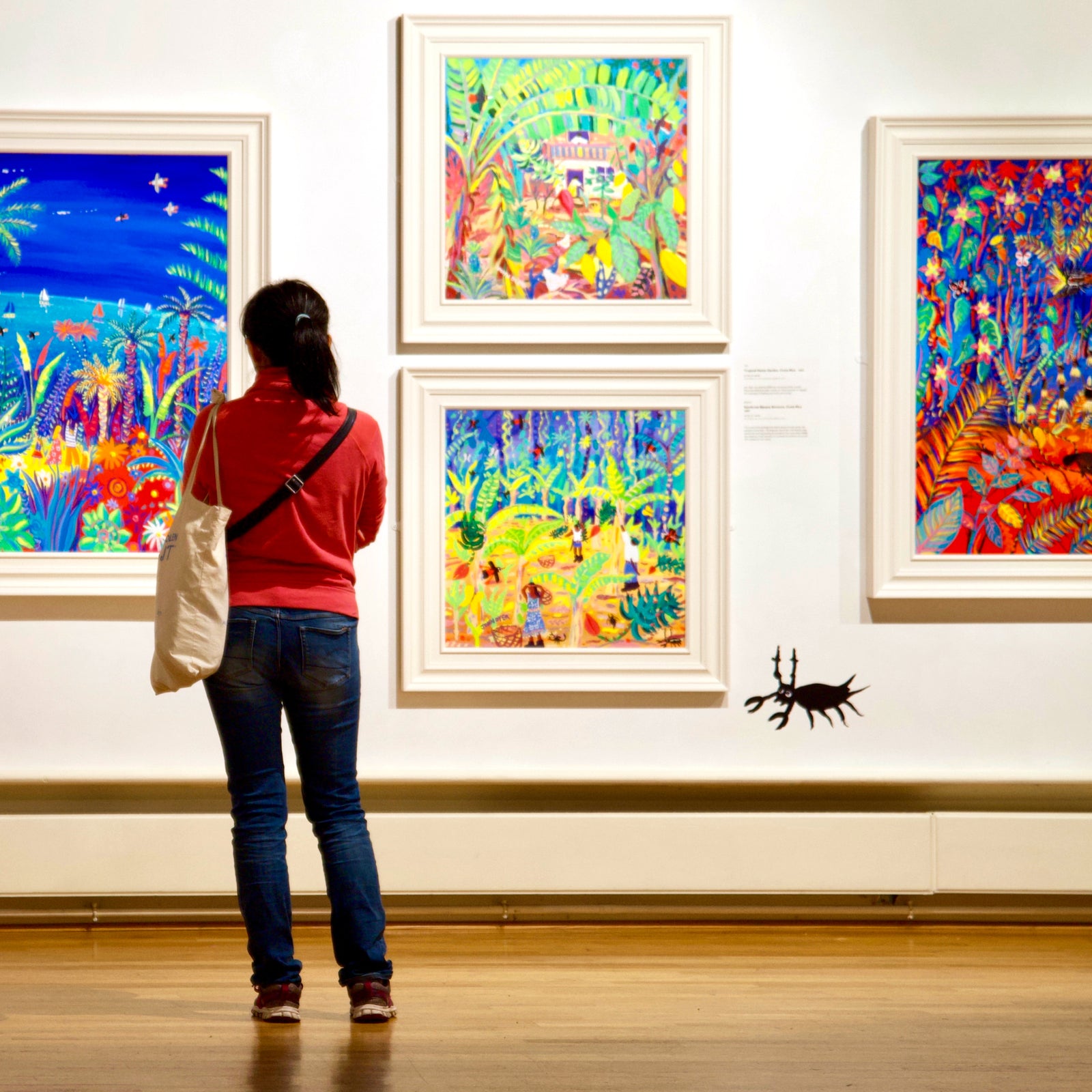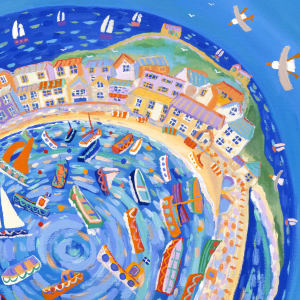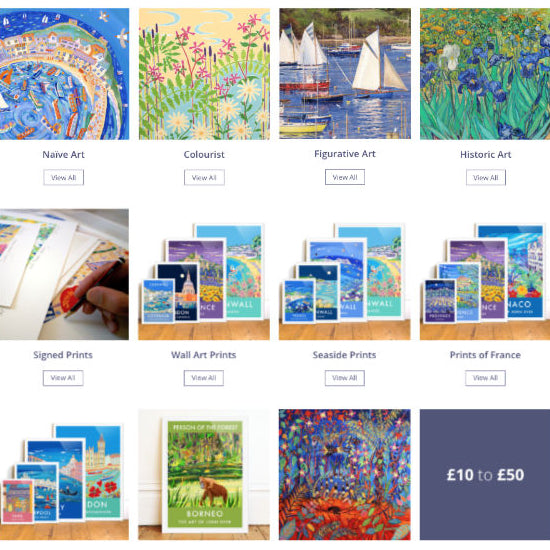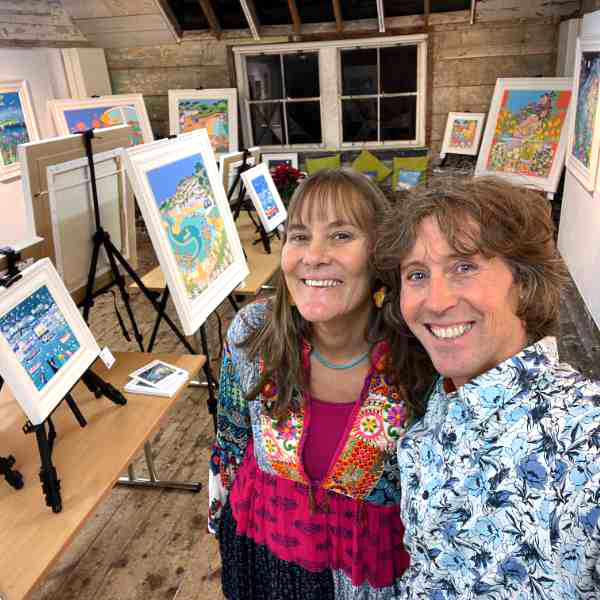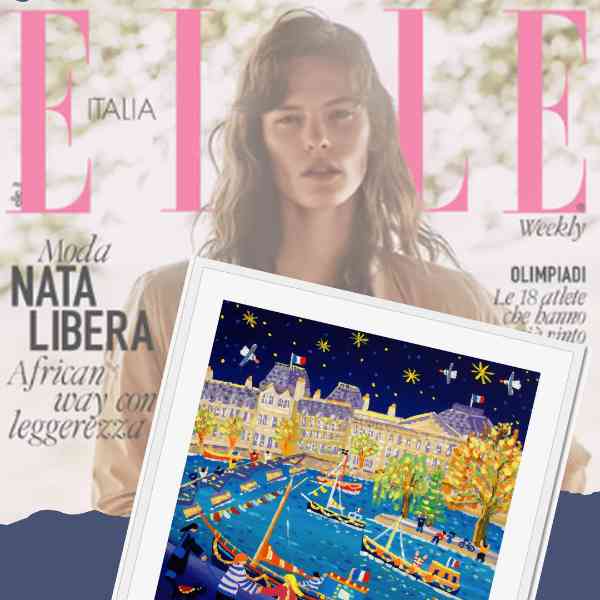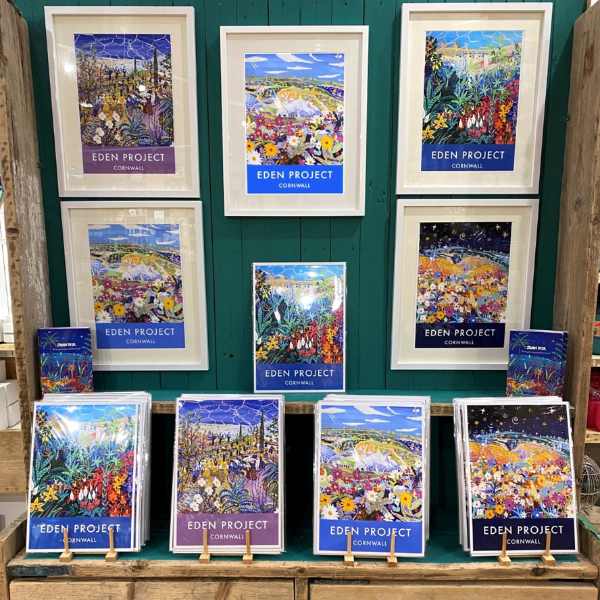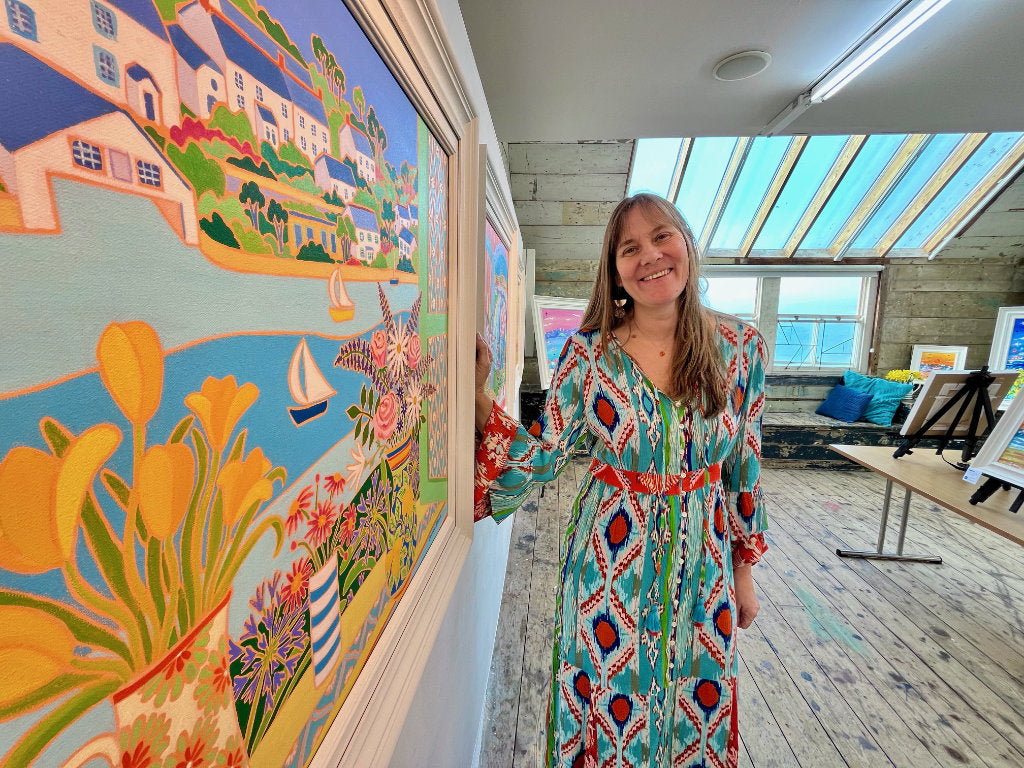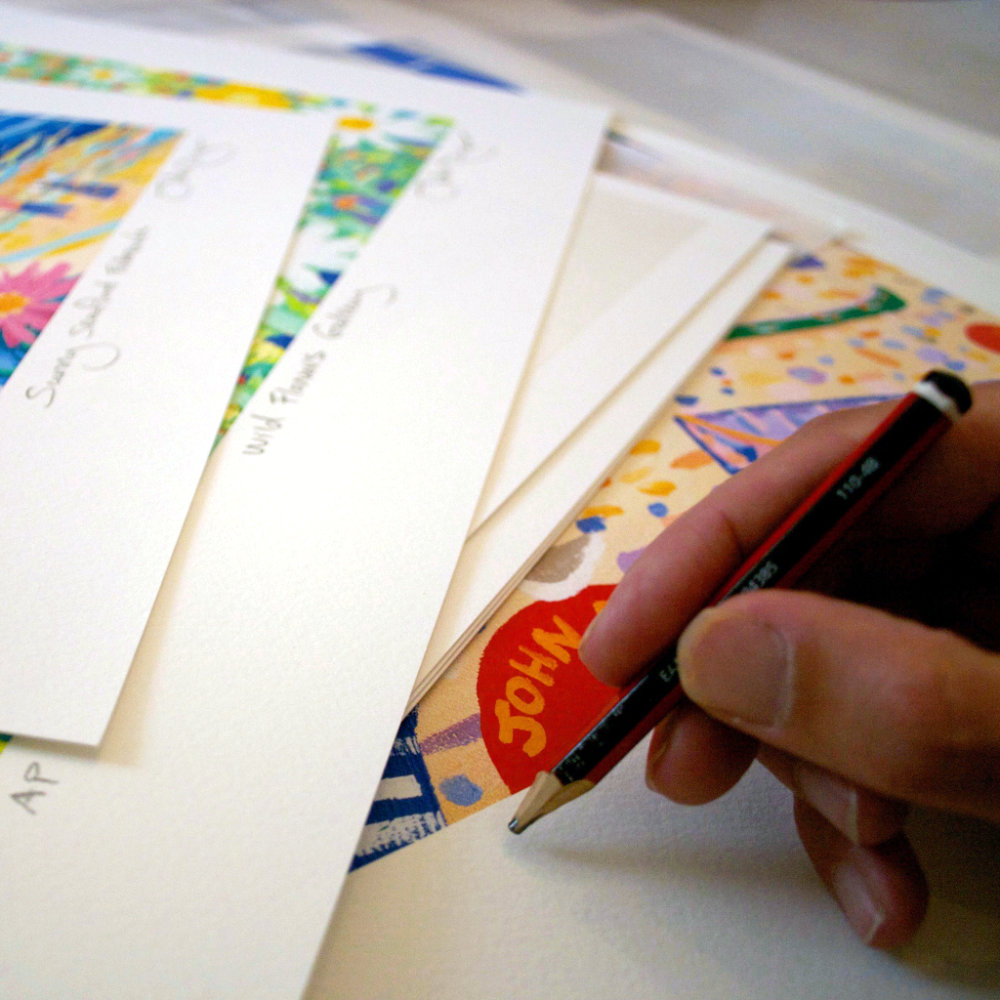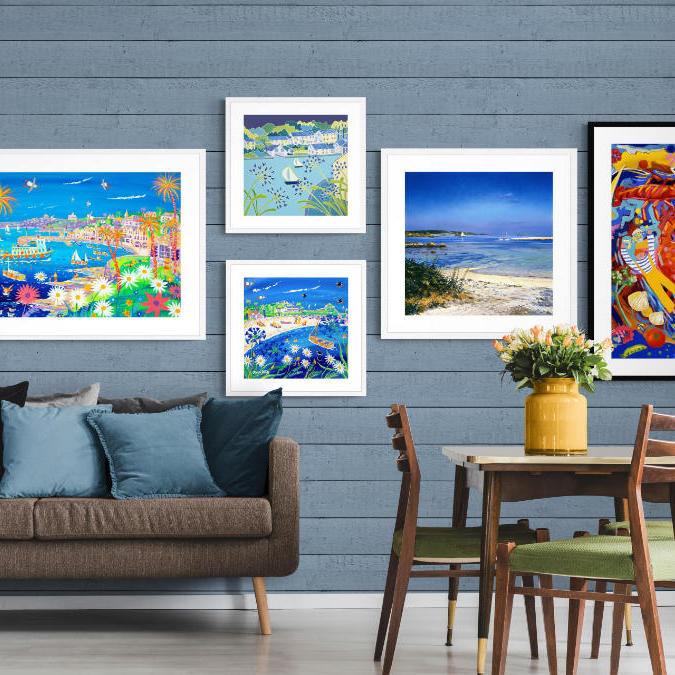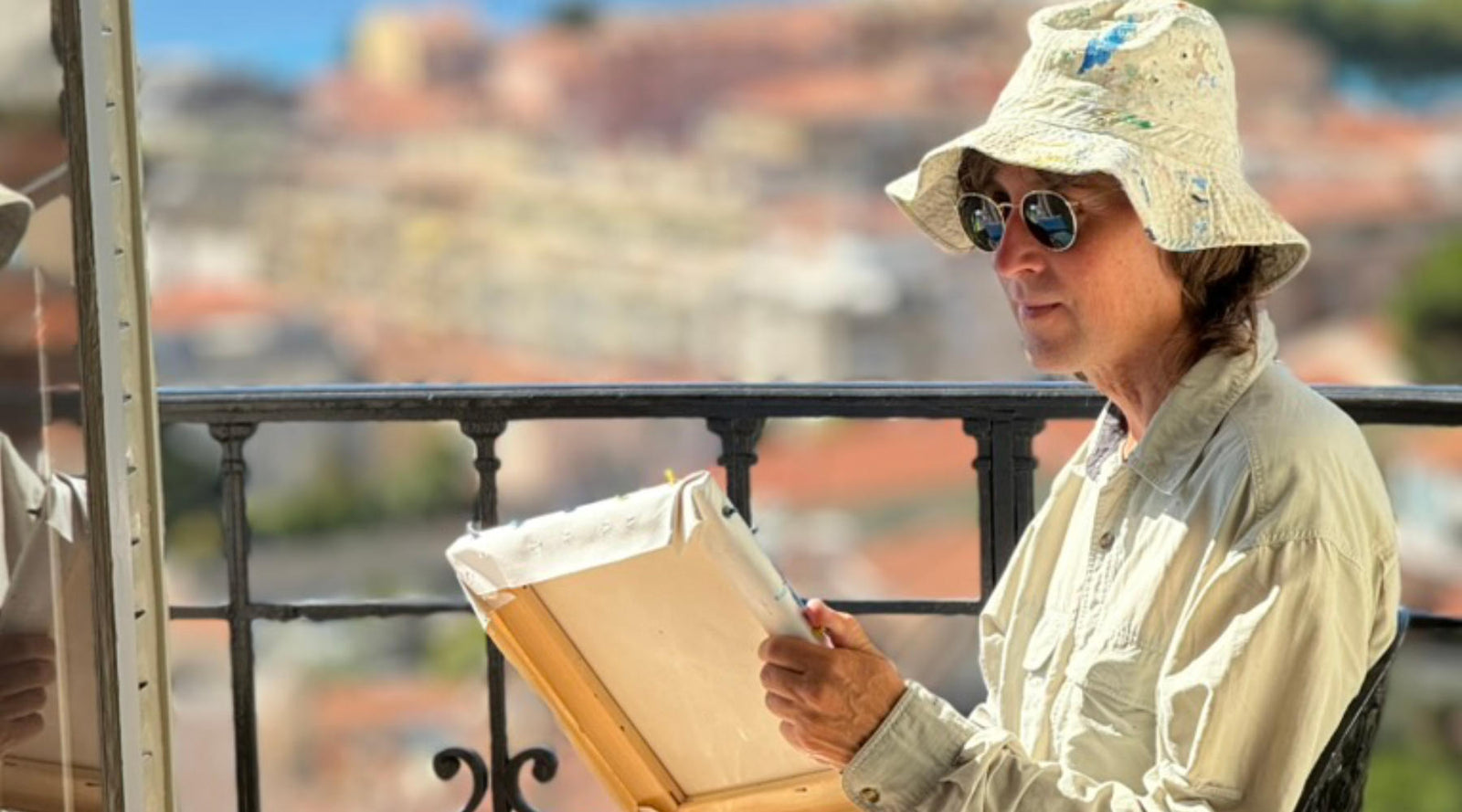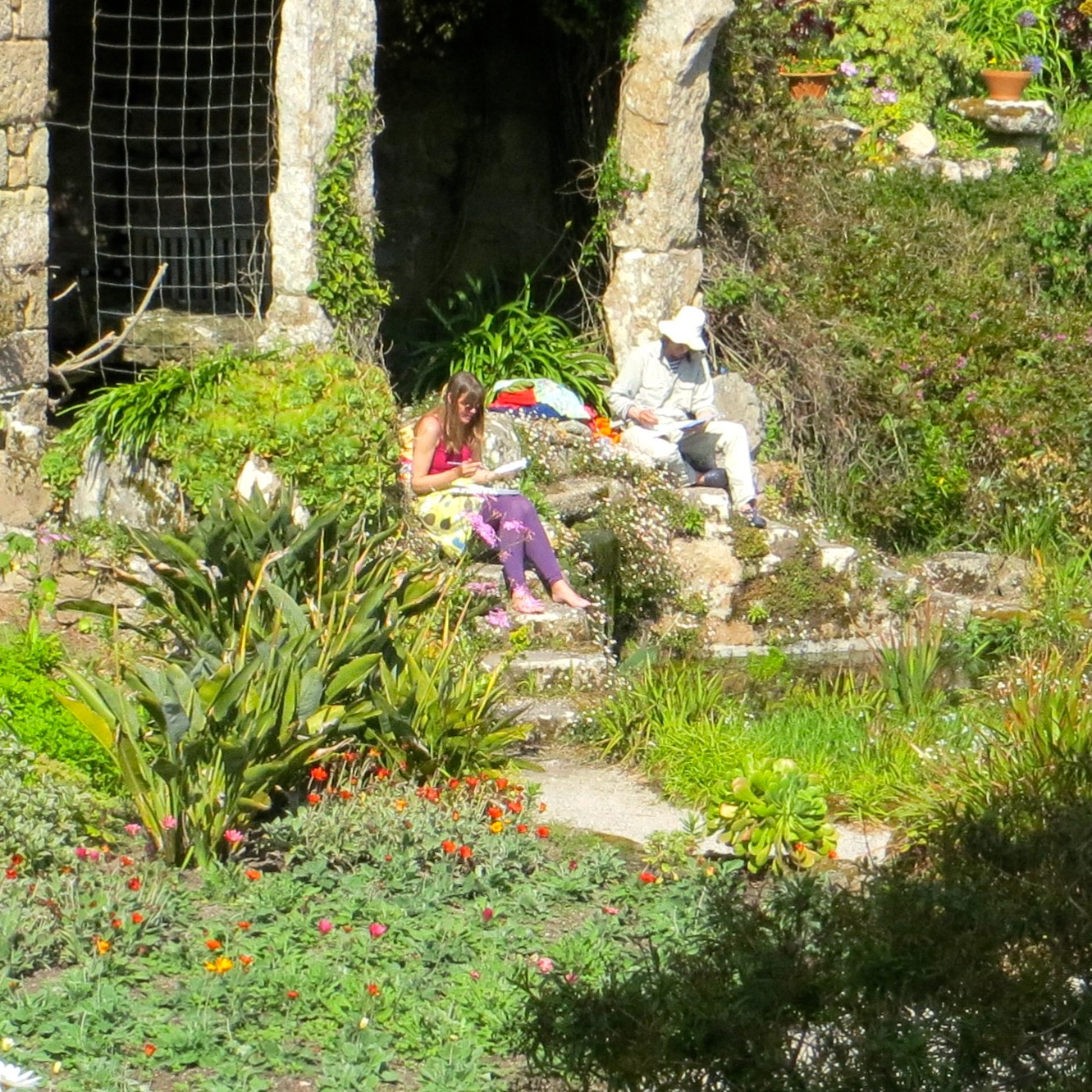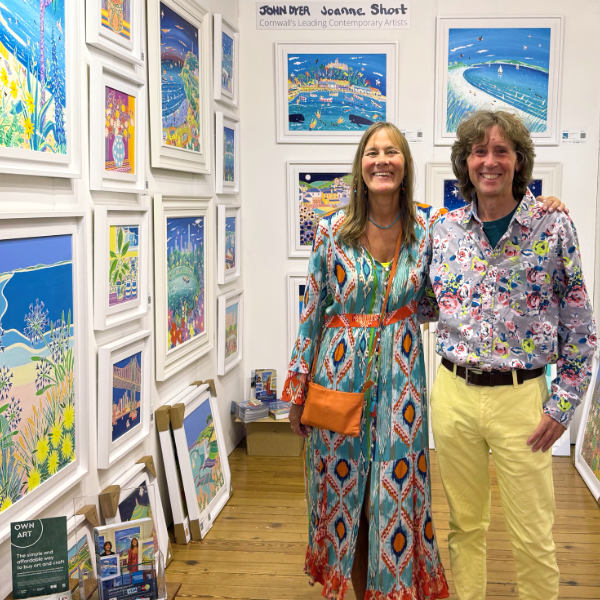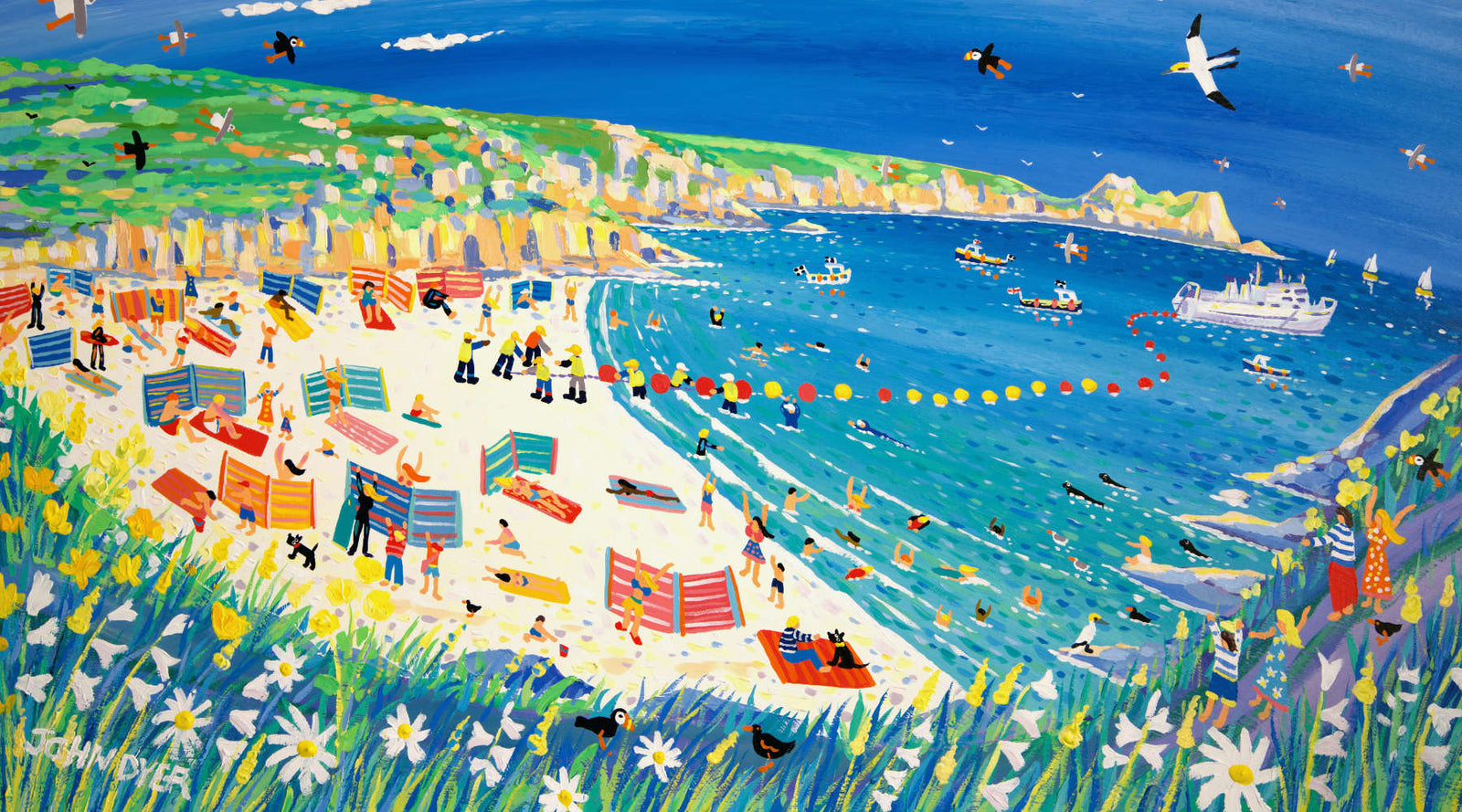
Above: 'Connected Cornwall', painting of Porthcurno beach by artist John Dyer.
The Lamorna Cove to Porthcurno coastline has been a source of inspiration for artists for centuries. The rugged cliffs, sandy beaches, and dramatic sea views have captured the imaginations of painters, photographers, and sculptors alike. In this blog post, we'll take a look at some of the art that has been created in this area over the years. We'll also explore the work of contemporary artists John Dyer and Joanne Short, who both enjoy to walk and paint in this beautiful part of Cornwall.

A Walk on the Wild Side: The Coast between Lamorna Cove and Porthcurno
Lamorna Cove Beach and Harbour
Lamorna Cove is a picturesque beach and small harbour located in a wooded, lush valley on the south-western side of Mount's Bay between Mousehole and Porthcurno, in Cornwall. The cove is well-protected from the elements, making it a popular spot for swimming and sunbathing. There is also a stone quay and slipway, which provide access for small boats. Behind the beach are a number of granite cottages, which add to the idyllic scene. While Lamorna Cove beach is relatively unknown compared to some of Cornwall's other beaches, it is definitely worth a visit if you are looking for a tranquil place to relax. The lovely beach is, however, only revealed at low tide.
'Sunny Day, Lamorna Cove', 12x10 inches acrylic on canvas. Cornwall Painting by Cornish Artist John Dyer
Lamorna Cove was once a thriving fishing village. In the early 1900s, there were over 20 fishing boats based in the cove. There was also a small school in the village in 1881 which implies there was a larger community in the area, probably revolving around the mining industry which thrived in and around this area during this time, and quarry workers and their families. There is evidence of an abandoned quarry adjacent to the cliffs.
Drawing of Lamorna Cove by artist Joanne Short
The well known cornish pub in Lamorna village is called 'The Wink' — a name most likely inspired by the site's past use by local smugglers and ‘tipping the wink' or 'the Lamorna wink' to the landlord to get you illicit goods. This area of coast was a renowned smugglers haven.
Leaving Lamorna Cove, following the coast path heading West, the terrain is rugged and rocky, perhaps some of the trickiest walking we have come across so far on our adventures!
St Loys Cove
A beautiful valley with a footpath leading down from St Buryan, leads down to this very interesting-looking beach. Unlike most of the surrounding beaches in West Cornwall with very fine white sand, this beach is covered in large boulders. Although tricky to clamber across, it is fun to step from boulder to boulder once one builds up some confidence!
The cliffs behind Loys Cove are easily eroded and amongst the rounded boulders on the beach are irregular-shaped granite stones that have fallen from the cliff. It is fascinating the contrast of this beach to others.

Artist Joanne Short at St Loys Cove
Leading down to the cove is a beautiful green valley with a particularly warm climate. A narrow lane leads down the valley and joins a wooded footpath down to the beach.
Penberth
Penberth Cove, a tiny fishing hamlet on the eastern coast of Cornwall, is located at the base of a wooded valley just to the east of Porthcurno. It has been one of the most beautiful places in the area for more than a century. This cove was one of several in the area used as film locations for the series Poldark.
A picturesque natural harbour nestled below the cliffs, is situated at Penberth. It features a wide granite cobblestone slipway at the top of which sits an enormous wooden capstan. This would have been used to haul fishing vessels up the slope in days past, but now an electric winch is used instead. Penberth still has a small fishing fleet today. On a beautiful spring day the whole cliffside is alight with pink and yellow Hottentot flowers.
Pedn Vounder
Continuing along the coast path towards Porth Curnow comes the stunning beach of Pedn Vounder. It is a bit of a scramble down the cliffs to get down there and is also very tide dependant, but the stunning white sand and turquoise sea make it a view well worth taking in, even from above on the footpath.
Pedn Vounder is one of Cornwall's most picturesque beaches, with its dramatic cliffs, crystal clear water, and white sand. The name Pedn Vounder comes from the Cornish words 'pedn', meaning head or end, and 'vounder', meaning lane - so, literally 'end of lane'. 'Pedn' is pronounced 'pednee', and this is how locals usually refer to the beach. Pedn Vounder is located at the eastern end of Porthcurno cove, and at low tide, it is possible to walk to Pedn Vounder from the neighbouring Porthcurno beach. The dramatic cliffs and clear turquoise waters make Pedn Vounder a truly beautiful and unique place, well worth a visit if you are ever in Cornwall.
Above: John Dyer Painting. 'Caribbean Colours, Pedn Vounder Beach' 10x12 inches acrylic on canvas.
Porthcurno
Just a short walk and our destination. Porthcurno is a beautiful place with a stunning beach. The sand is white and the sea is a beautiful turquoise colour. The beach is considered a gem due to its breathtaking views and the granite cliffs that are located behind it rising 60m to 70m above sea level.

Above: Artist John Dyer on the cliffs above Porthcurno
The nearby cliffs are formed from a bedrock of prism granite which have been eroded and shaped into dramatic looking rounded cubic blocks. The most famous example of this being Logan's Rock situated above Pedn Vounder; it is a huge detached rock which is balanced on the headland that can actually be rocked on its base.
Above: John Dyer Painting. 'Walking to Porthcurno Beach' 12x10 inches acrylic on canvas
The beach itself is a popular destination for tourists and locals alike. Visitors enjoy swimming, sunbathing, and picnicking in the warm weather. All this can be seen in John's fun-filled paintings. In addition, the beach is a great place to take a hike or go for a walk, as there are many trails that wind along the cliffs and provide stunning views of the coastline. It is a stunning Area of Outstanding Natural Beauty. (AONB). Porthcurno is definitely worth a visit if you are ever in the area.
Lamorna School of Artists
Lamorna Cove has been a popular destination for artists for over a hundred years.
Up to the present day, Lamorna has been popular with painters, potters, craftsmen and writers. Some of the better known associated with the hamlet are John le Carré and Derek Tangye. There are still many artists and craftsmen living in the area around Lamorna. The area boasts several potteries
The cove was originally owned by factory owner Colonel Paynter, who established an artists colony here. The Lamorna School, as it became known, included artists such as Laura Knight, Dod Proctor and Lamorna Birch - who took his name from the cove. The colony was a thriving community of creatives and a later offshoot from the more famous Newlyn School established in the 1880s. Lamorna Cove produced some of the most iconic British art of the 20th century. Today, the cove is still privately owned, and it remains a popular spot for painters, photographers and nature lovers alike.
Lamorna Birch (1869 – 1955)
The leading figure of the second flowering of the Newlyn School, Samuel John Birch was so smitten with the Lamorna valley and cove that he took its name as his own, becoming known as Lamorna Birch.
Samuel John Birch was born in Egremont, Cheshire, was largely a self-taught artist.
In the late 19th century, Birch first visited West Cornwall and settled in the Lamorna Valley in 1892. In 1895, he took on the name 'Lamorna' because he was so immersed in the locality and loved it there so much. He is credited with founding the later group of Newlyn artists, which included Laura and Harold Knight, Alfred Munnings, Frank Gascoigne Heath, and Stanley Gardiner sometimes referred to as 'the Lamorna Group'.

Above: 'Lamorna, the Sleeping Sea', by Samual John Lamorna Birch (1869-1955). Courtesy of Bonhams.
"It is a little picture on which I worked very hard and tried my best to get the lovely colour and clarity of the sea". Lamorna Birch, 1936.
Lamorna Birch was a landscape painter who often featured Lamorna Cove in his paintings. One of his most famous paintings is 'The Pool, Lamorna Cove' which he completed in 1913. The painting shows people swimming in the pool which is located at the bottom of Lamorna cove.
Laura Knight (1877-1970)
Dame Laura Knight (née Johnson) (4 August 1877 – 7 July 1970), was an English artist who specialized in oils, watercolors, etching, engraving and drypoint. Knight was a realist painter in the figurative style who embraced British Impressionism. She visited Lamorna Cove on many occasions before eventually moving there in 1913. She painted several pictures of people swimming and bathing.

Above: 'The Beach', by Dame Laura Knight (1877-1970). © reproduced with permission of the estate of Dame Laura Knight, DBE, RA / Bridgeman Images. Photo credit: Laing Art Gallery
In Newlyn, Laura Knight could unwind in the company of like-minded fellow artists. Cornwall's mild climate allowed her to work outside, which she really enjoyed. She became accustomed to trekking long heavy canvases over difficult terrain in order to get the perfect viewpoint from which to paint.Laura and her husband Harold left Newlyn to move to the pretty but isolated Lamorna Valley where they formed several close friendships, notably with their neighbours Ella and Charles Naper.
Her lightheartedness was reflected in her work while located in Cornwall. The sea provided a backdrop to images of kids playing on the beach, splashing about in the water, or exploring rock pools. This style of painting and use of narrative still very much informs the paintings by Ted Dyer which you can see from the painting below.
Ted Dyer Fine Art Print. Open Edition Cornish Art Print. 'Clear Water, Castle Beach, Falmouth'
In 1929 she was created a Dame, and in 1936 became the second woman elected to full membership of the Royal Academy.Knight's success in the male-dominated British art industry paved the way for women artists to gain greater respect and acclaim.
'Summer Flowers, Gorran Haven', 12x12 inches oil on canvas. Painting by Cornish Artist Joanne Short
"As a female artist myself, I feel it only right to commend the strength and passion that dame Laura Knight showed, forging her way to recognition despite painting being very much a male dominated occupation at the time. She is an inspiration to me and should continue to be so for future female painters for many years to come."
Dod Proctor (1892–1972)
Dod (Doris) Proctor was a female artist, born in London, married to the artist Ernest Procter. She studied art with Stanhope Forbes in Newlyn around 1907–8 when she was just 15.It was there that she met fellow student Ernest Proctor and went on to marry him.She went on to live in Newlyn, after more training in Paris and several years of travelling and working abroad, and is most associated with pictures of the people and countryside in Cornwall.

Above: 'Early Morning, Newlyn', by Dod Procter. © the artist's estate / Bridgeman Images. Photo credit: City & County of Swansea: Glynn Vivian Art Gallery Collection
She was very influenced by the impressionist and post-impressionist style of painting, especially after meeting Pierre-Auguste Renoir and Paul Cézanne.
Lamorna Cove to Porthcurno by foot
The walk from Lamorna to Porthcurno is stunning. The spring flowers were gorgeous the day we decided to go on this walk and the sea was looking very inviting. The walking was very strenuous in parts, but the views are amazing and well worth the effort.
John Dyer Museum-Quality Print. 'Seaside Garden, Lamorna Cove, Cornwall'
The view of the crystal white bay as you descend into Porthcurno is breathtaking. (Please be aware that there is a seasonal dog ban on Porthcurno beach if you are planning a walk with your furry friend.) John's painting of this brings it all to life; all the summer fun and joy a holiday in Cornwall brings! It is a stunning location to visit and paint.
Limited Edition Print by Cornish Artist John Dyer. 'Sparkling Sea and White Sand, Porthcurno'
Many of the paintings that are featured in this blog about Lamorna Cove are available to purchase on our acclaimed online Cornish art gallery where you can also discover more about each painting and print, and background information on our artists.
